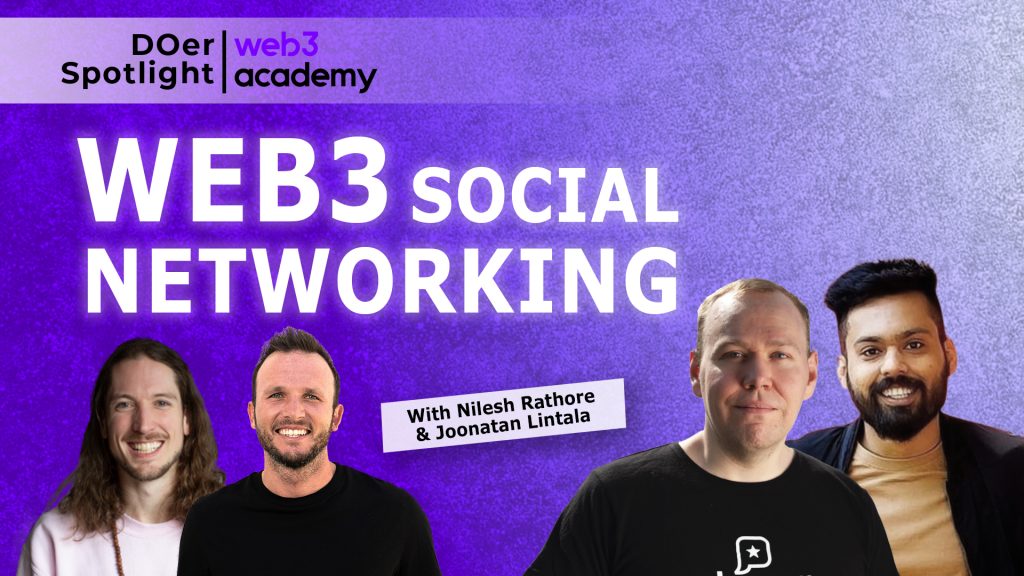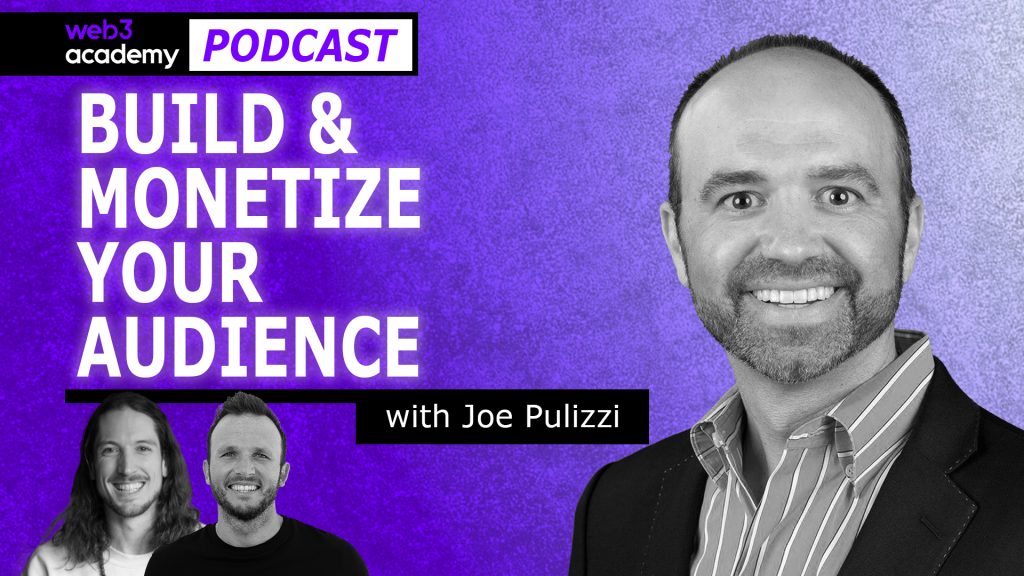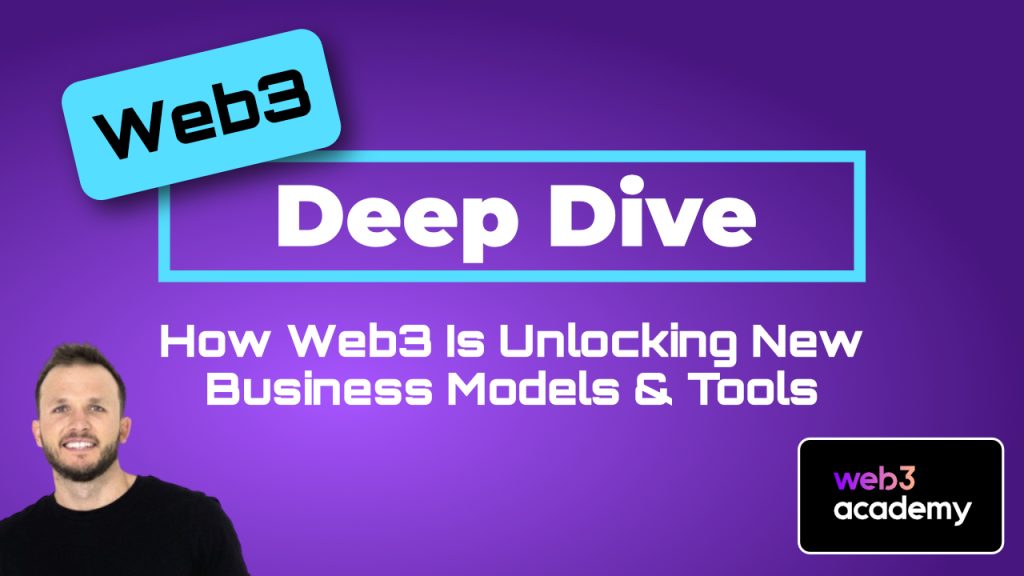
Why Web3 Social Will Transcend Its Web2 Counterparts
Web2 Controls Users While Web3 Gives Users Control
No time to read? Get the low down on web3 social through your favorite podcast platform 👇
GM web3 explorers!
We’ve been hearing tons about web3 social media platforms lately.
But if you haven’t been keeping up, you’re probably wondering why we need web3 social when we’ve already got Twitter, Facebook, Instagram, and more.
Well, it all comes down to who holds the power. 👊
In web2, power lies with corporations who seek to maximize revenue. But in web3, it’s all about giving power back to users and creators, enabling the best user experience possible. 😁
In this Deep Dive, I’ll cover more on what’s wrong with centralized social media platforms and all the ways web3 social offers a better option.
Here’s what you need to know if you’re still a fan of web2 social 👇
Tired of Elon’s memes? Then check out Lenster, the evolution of social networking 👀
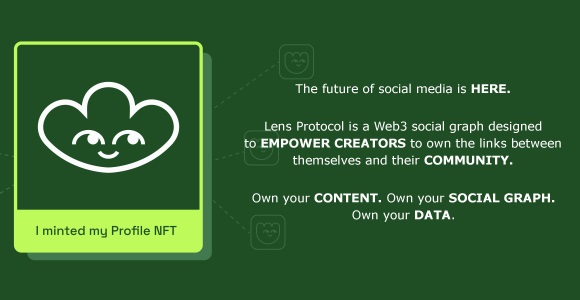
Wait, What’s Wrong With Our Current Social Platforms?
If you’re a creator, public figure, or simply run a business that revolves around or is based on social media, you know exactly what’s wrong with our current platforms.
But for everyone else, here’s what you should know about web2 social:
- Censorship is common on web2 platforms
- The minority (executives, board members, etc.) decide how web2 social is run
- Users don’t own their data
- Security is an afterthought
Let’s dive deeper into these four problems.
Censorship is Rife
Now, censorship is a touchy subject because some level of censorship is a good idea.
For example, when it comes to:
- Sharing the private details of other individuals—aka doxxing
- Uploading illegal or copyrighted material, such as movies
- Hateful content, such as the anti-Semitic remarks that Kanye shared recently
- Graphic content, such as violent or pornographic material
Censorship also helps to curb propaganda, such as some of the content you likely saw during the early and middle stages of the Covid-19 pandemic.
However, there’s a fine line between good censorship and limiting content just because it doesn’t fit a platform’s political agenda.
I’ll preface this by saying I’m not a big fan of politics in general and that I don’t really have an opinion on who was in the right.
But love him or hate him, Twitter permanently banning Trump from the social network can be seen as censorship going too far. While there was obviously some tension around the election, nothing he said explicitly incited violence. Instead, it was Twitter’s interpretation that got him banned.

Another example is when Facebook decided to force business pages to advertise on the platform because their content wouldn’t be shown organically. While this isn’t outright censorship, it still forced businesses to pay to play.
The Minority Runs the Show
Like the Facebook example above, web2 social networks put profits and board members before users.
Do you think Facebook made that move to improve the platform’s user experience? As much as they’d argue it is, Facebook’s advertising revenue makes up 97.6% of its total revenue.
On the other hand, you have Elon Musk and Twitter. Since he bought the platform he’s made some serious changes in hopes of “reviving” the platform. However, not long after he shared that Twitter could be close to bankruptcy.
Imagine trying to build your social profile when platforms like these could change their policies or shut down a platform at any time!
An ex-Facebook whistleblower even recently testified that the company “puts profits over people’s safety”. She also shared some internal documents regarding an algorithm change in 2018 that Facebook knew would favor sensationalistic, click-bait content.
Data Ownership? What Data Ownership?
On the note of building social profiles, one of the biggest problems in web2 is that users don’t own their data.
You could spend years building your presence on Facebook, Instagram, or Twitter, and have it disappear in an instant.
Whether you choose Facebook or Twitter, the platforms themselves own and benefit most from your content.
Creators generate tons of content, bringing more eyes to the platforms they post on and making the platforms more attractive to advertisers. The problem here is that creators get very little remuneration for their effort.

For example, Facebook earned $117.9 billion in 2021, but what did the platform do with this revenue? They decided that, in 2022, they’d pay $1 billion in total to the platform’s creators.
$1 billion. That’s less than 1% of the revenue they generated in 2021.
And if you don’t like Facebook’s terms? Well, there’s not much you can do besides post on other platforms with similar revenue structures. You can’t even take your followers or content with you—even though it was your hard work that built your following.
But what if you’re a consumer rather than a creator?
Well, creator revenue probably doesn’t bother you. But, what should bother you is the amount of data mining that happens on these platforms so they can offer hyper-targeted advertising.
Web2 platforms collect and analyze user data (think clicks, view time, and other actions) effectively monetizing your data without giving you anything in return—besides a platform with some decent content.
Something doesn’t add up to me 🤔
Poor Security
Centralized systems are much easier to hack than their decentralized counterparts. So it’s no surprise then that web2 social platforms have fallen victim to hacks many times over the years.
How many exactly?
- Facebook leads the charge with eight data breaches with the most notable (while not technically a data breach) being the Cambridge Analytica scandal which saw Facebook selling 87m users’ data.
- Twitter has experienced four data breaches with the most notable being 330m account passwords being exposed due to a ‘code glitch’.
- Even LinkedIn has had four breaches with the most notable being a breach of 165m user accounts.
Seems like they’re too focused on monetizing your data to worry about security!
But there is a better choice ✅

QUESTION
Who Do You Think Will Claim the Greatest Share of Web3 Social?
A. Web2-natives (Facebook, Instagram, Twitter, etc.)
B. Web3-natives (Lens, Galxe, CyberConnect, etc.)
👉 Let us know by replying with A or B to this email.
Why Web3 Social Is Better For Users
Web3 social networks put users first rather than profits.
They’re focused on building a better experience where users don’t have to put up with centralized authorities who make decisions in their own best interests.
Web3 social platforms actually care about what creators and users think, allowing them to shape the features and vision of the social networks they use.
But, to get more specific, there are six reasons why I believe web3 social will overcome web2 in the coming years:
- Interoperability and composability put user experiences first.
- There’s less censorship thanks to decentralization.
- Users actually own the networks they build regardless of the platforms they use.
- Creators don’t have to put up with a platform’s monetization policy, but can instead decide on monetization themselves.
- You’ll be able to verify your identity without having to share personal information.
- Web3 is much more secure, ensuring your personal data is safe.
Let’s break these reasons down further.
1. Interoperability and Composability Allow for Better UX
Interoperability refers to web3 protocols being able to interact with each other without the need for extra permission.
For example, dApps built on Lens Protocol (a decentralized social graph) can easily interact with each other since they all share the underlying technology. In web2, this would be like Facebook and Instagram being linked since they’re owned by the same company (Meta).
Except in web3, ownership doesn’t determine which dApps and protocols can interact. It’s about the open-source technology they share—which leads to composability.
The composable, open-source nature of blockchain means that developers don’t need to constantly code platforms from scratch. Instead, they can use existing code from Lens, for example.
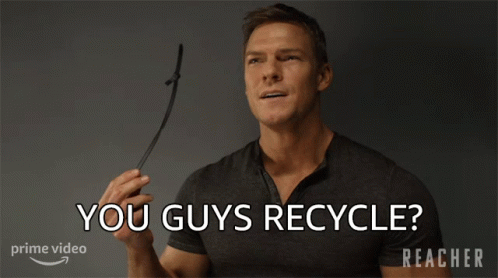
This is exactly what Phaver and Orb (who were previously on our podcast) did.
Instead of having to build their own blockchain and social graph, they leveraged Lens’ open-source code so they could focus on building the extra functionality they wanted their respective platforms to have.
It also means that, if platforms don’t put their users first, an entrepreneurial dev could easily create a similar application that does meet user expectations.
And since it’s much easier for developers to build web3 social networks, there will be more options for users.
But interoperability isn’t only good for developers. It also means that users can take their followers, profile data, and content between different platforms.
For example, Lens supports interoperability by creating NFTs for each action users take on the platform (posts, followers, etc.). And since NFTs allow ownership, it allows owners to take them not only around the Lens ecosystem but also to any protocol or wallet that supports these NFTs.
This means you don’t have to stick around on platforms that don’t value you and it unlocks some insane options for cross-platform gated content.
2. Decentralization Means Fairer Censorship
As I said above, censorship is necessary in some circumstances. However, censorship should reflect the values of the wider community using a particular platform.
It’s a common practice for protocols in web3 to let their users vote on company decisions. For example, in web3 social, this could be voting on censorship guidelines and where to draw the line on different types of content.
This means platforms couldn’t suddenly ban advertising or content on certain topics (yeah I’m talking about you banning crypto advertising Mr. Zuck).
In web3, censorship isn’t about promoting (or silencing) a particular political agenda or curating content to fit a needed narrative.
Instead, it’s about making platforms open to all who want to use them. It’s about enabling diverse, healthy conversations and debates around topics that shape our world.
3. Identity Ownership and Portability
Ownership and data portability are arguably the biggest unlocks of web3 social.
We spend most of our time online and our social identities are just as valuable as our IRL ones. Our social profiles help us find jobs, friends, or even customers if we want to start a business.
But without ownership (like in web2) our hard-earned networks can be lost without a trace.

For example, Joonatan Lintala, the founder of Phaver, shared an incident with us where his grandmother actually lost all her Facebook data because of a simple mistake. She accidentally set her profile age too low and instantly lost ten years’ worth of memories, photos, and family interactions.
When you own your social identity this can’t happen. It also means platforms can’t mine your data without your permission!
Stani Kulechov, the founder of Lens, put it perfectly, “Having an on-chain profile would mean that you could actually have the ownership of the audience you create, and your self-expression, and no one can actually take that away from you.”
In web3, no one can take your social profile from you. Instead, you can take it wherever you want—without losing your followers or content!

SOCIALS
Meme of the Week
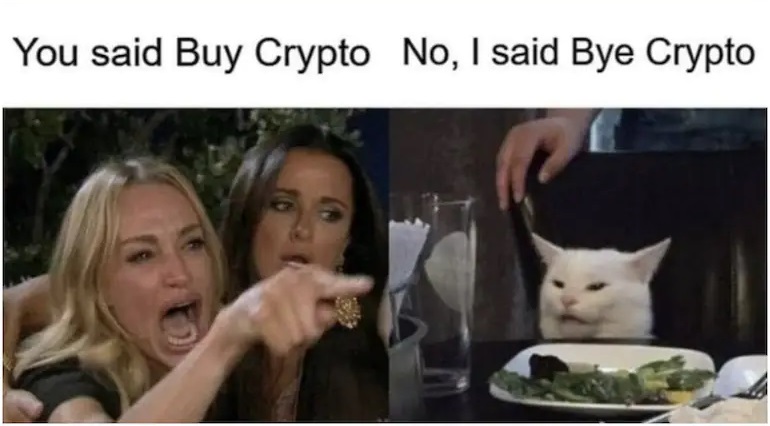
4. Control Over Monetization and Engagement
Creator monetization in web2 is broken.
Platforms use algorithms to determine the most profitable ads to show in between a creator’s content and they take most of the profits for doing so. If creators don’t like it, there’s not much they can do if they want to keep making money.
But in web3, many platforms see the value of creators and are putting them first. For example, Wubits is an upcoming web3 social platform that gives creators complete control over content monetization.
How?
Basically, every piece of premium content is its own token. So, for example, a crypto trader could post free daily crypto analyses. However, they could easily create a special report that goes beyond what they normally post and token-gate it on the Wubits platform.
This is the kind of control that web2 platforms will never give creators.
And since social graphs in web3 are portable, it means that creators can always choose the platforms that best suit their needs. If a new platform provides better monetization options, you can easily take your content and followers with you.
Heck, some web3 platforms even plan to reward consumers for their participation! For example, Phaver plans to be a share-to-earn platform where users curate content from around the web with high-quality content receiving more rewards.
This creates a circular economy where everyone wins.
5. Trustless, Instant Identity and Credential Verifications
In web2, there’s no real digital verification process for credentials.
I could literally say that I graduated from Harvard on my LinkedIn profile and no one would bat an eye—especially if I was good at photoshop. Sure, I may run into problems if I applied to a big tech company, but a small business? Chances are they wouldn’t know the difference.
But in web3, these types of credentials can easily be verified on-chain without the need for re-verification. Not only can this keep us safer from scammers, but it also means we can easily verify our own identities and credentials without getting documents certified by a third party for each new verification.

Using the internet is also much simpler in web3—all you need is a wallet!
You don’t need to share your details constantly. No birthday, address, phone number, or anything like that. Just sign a message in your wallet and you’re good to go.
But one of the coolest parts of web3 is that you can prove certain information, such as your age, without explicitly sharing how old you are. For example, if you want to buy alcohol, you could prove that you’re above the legal age without explicitly stating your age.
While your age isn’t exactly sensitive information, Zero Knowledge Proofs are a powerful tool for keeping ourselves safe online.
6. Web3 is More Secure
Web2 platforms rely on centralized databases which provide a single point of vulnerability that hackers can exploit.
And the same happens in web3, with most of the hacks actually coming from centralized actors, such as bridges or centralized blockchains, which aren’t true web3 entities.
But through decentralization, cryptography, and methods, such as Zero Knowledge Proofs, protocols have the means to safeguard user data at all times.
Web3 social also shies away from the intrusive data mining that web2 platforms use to sell advertising.
For example, Facebook’s Pixel literally has the power to track all your moves online. It can tell advertisers the products you click on, whether you added them to your cart, and more.
Armed with this information, advertisers can easily target you with ultra-specific ads related to the products you clicked on.
Joonatan shared with us on a previous podcast that Facebook was even able to track user GPS locations.
How creepy is that?!
This means Facebook housed (and may still house) sensitive information relating to where people live and the places they frequent.
Now imagine if this data was exposed in a breach…
🤝 Together with Unlock Protocol: Making Web3 Memberships Easy
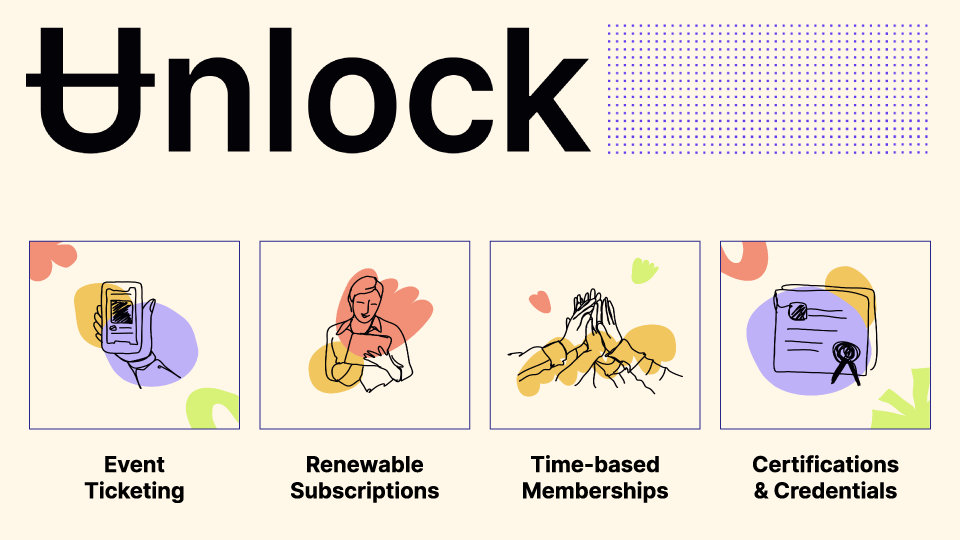
Unlock Protocol lets you create memberships and subscription NFTs in minutes!
👉 LEARN HOW 👈
Web3 Social is Coming
We’re still in the nascent stages of web3 social networking. But there’s plenty happening in the space.
We’ve got foundational protocols, like Lens, that allow users to truly own an interoperable social profile that they can use across any dApps built on the platform. For example, you could use your Lens handle to access Phaver without creating a new profile.
At the moment, developers are building hundreds of applications on Lens from new social networks to creator tools, and more.
And this is only one particular social ecosystem in web3!
With the power of open-source blockchain, we’ll be spoiled for choice regarding social networking.
So we don’t need to worry about all the problems of web2 social. Instead, we can look forward to what’s coming next 👀
ABOUT THE AUTHOR
Myles O’Bery
Content creator and crypto connoisseur at Web3 Academy
Find him: Twitter

FOR THE DOERS
Take Action & Level Up
LEARN
Take our FREE Web3 Rabbit Hole Course to get up-to-speed on the foundational components of Web3 so you can confidently build, work, or use the fastest growing technology in history.
JOIN
Head over to the Web3 Explorers Club to get involved in our community-cultivated mastermind!
READ
Now that you know about the power of web3 social, it’s the perfect time to learn How to Build and Monetize an Audience in the Creator Economy.




